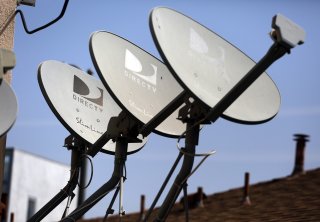Dish Has Bigger Problems Than Just Lost Sports Channels
The regional sports network model is approaching the point of no longer being viable.
On Monday night, per The Streamable, Dish Network subscribers in New England lost access to NESN, the local regional sports network. That network carries local broadcasts for the Boston Red Sox and Boston Bruins.
The loss of NESN means that Dish no longer carries any regional sports networks, having dropped the family of channels now known as Bally Sports back in 2019, and lost the NBC Sports regional channels earlier this year.
In a statement, Dish TV’s president indicated that the satellite company is in no hurry to get those networks back.
“The current Regional Sports Network (RSN) model is fundamentally broken,” Brian Neylon, group president for Dish TV, said in a statement, published by The Streamable. "This model requires nearly all customers to pay for RSNs when only a small percentage of customers actually watch them. As the cost of these channels continues to escalate and a la carte viewing options become ever more accessible, we no longer think it makes sense to include them in our TV lineup.”
The statement is in line with recent thinking, from analysts and others, that the regional sports network model is approaching the point of no longer being viable.
Even the leaders of sports leagues have made similar comments. The New York Post reported this fall that Major League Baseball is interested in launching its own streaming service to host local streaming broadcasts, possibly in partnership with other sports leagues such as the NBA and NHL. This would cut out the RSN middle man, while also giving those leagues a new revenue stream.
At any rate, Dish appears to be conceding that if people want to watch local sports broadcasts, they need to subscribe elsewhere. But it remains just one of many problems for the satellite company.
Dish, in recent years, has switched its focus to wireless service and continues to operate the Sling TV vMVPD. But its core Dish service is still losing subscribers. It dropped 130,000 in the third quarter, leaving it with about 8.4 million.
Also, there’s long been speculation that Dish could merge with rival DirecTV with Dish’s Chairman Charlie Ergen stating multiple times that such a deal is “inevitable.” But DirecTV completed its spinoff process earlier this year, with AT&T spinning the service into a separate company with the help of private equity giant TPG Group, and it doesn’t appear Dish Network ever emerged as a major factor in those negotiations.
But there’s another issue that could pose an even more existential threat to Dish Networks’ viability- the condition of its satellites.
Back in August, MoffettNathanson analyst Craig Moffett wrote, per FierceWireless, that the actual physical satellites of Dish and its rival DirecTV, are notably old. Dish has eleven satellites, nine of which are more than a decade old, meaning most of its satellites are nearing the end of their lifespan.
“To dwell on whether a given quarter’s subscriber losses are a little better, or a little worse, than expected, or than last quarter, is to miss the point,” Moffett’s research note stated, per FierceWireless. “We are witnessing the long, slow goodbye of satellite TV. The terminal value of a satellite TV platform with neither satellites nor subscribers is, quite obviously…zero.”
Stephen Silver, a technology writer for The National Interest, is a journalist, essayist and film critic, who is also a contributor to The Philadelphia Inquirer, Philly Voice, Philadelphia Weekly, the Jewish Telegraphic Agency, Living Life Fearless, Backstage magazine, Broad Street Review and Splice Today. The co-founder of the Philadelphia Film Critics Circle, Stephen lives in suburban Philadelphia with his wife and two sons. Follow him on Twitter at @StephenSilver.

